Dali Landmark, Three Towers of Chongsheng Temple
Dali, Yunnan has many cultural relics and historic sites, the most famous of which is the Three Towers of Chongsheng Temple, which is not only a symbol of Dali. Today, the Three Pagoda Scenic Area of Chongsheng Temple in Dali is divided into two major parts. The front area is centered on the three towers, including the Three Pagoda, Nanzhao Jianji Bell and Yutong Guanyin Hall; the back area is Chongsheng Temple, known as the first temple of Han Buddhism. Except for the three towers, all others are restored and rebuilt, with magnificent momentum, huge scale and resplendent glory.
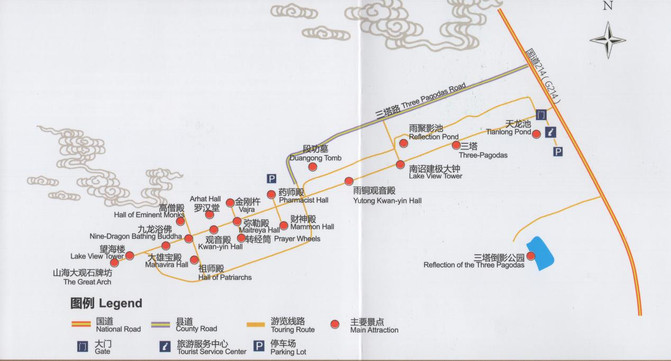
The pagoda first originated in ancient India and was shaped like a tomb where the Buddha bone relics of Buddha Sakyamuni were housed. When the pagoda was introduced into China, it was built in the center of the temple according to the ancient Indian shape and placed relics. Later, it gradually evolved in form, location and even function.
Ancient Indian "Tower"
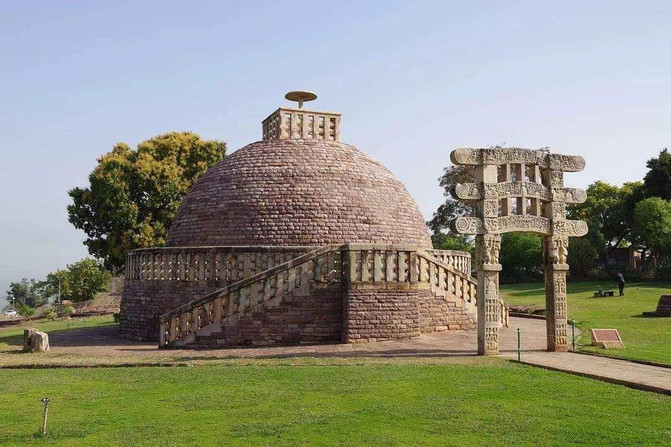
At the foot of Yingle Peak in Cangshan Mountain, northwest of the ancient city of Dali, the grand royal temple Chongsheng Temple was built during the Fengyou period of Nanzhao (823 - 859), with three pagodas standing in front of the temple. The back temple was destroyed, but the three pagodas were still standing.
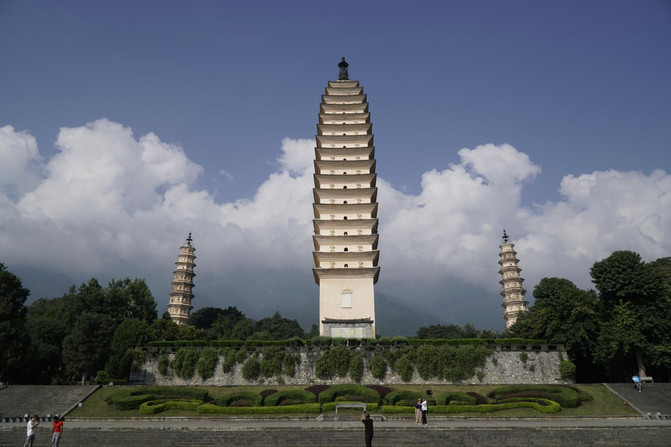
The main tower, Chihiro Tower,"Xun" is an ancient unit of length, meaning the height of the tower. The tower is 69 meters high and has a 16-level square hollow brick tower with dense eaves. There is a wooden ladder circling upwards in the center of the tower, similar to the Little Wild Goose Pagoda in the Tang Dynasty in Xi'an, which is a typical architectural style of the Tang Pagoda. There is a pagoda at the top of the tower, where the roc and golden-winged bird are hidden. It is said that there are many floods in the Dali area. To control water, we must first treat dragons. Dragons are afraid of Dapeng, and Dapeng plays a role in water control.

Dapeng Golden-Winged Bird (Collected in the Three Towers Cultural Relics Exhibition Hall of Chongsheng Temple)
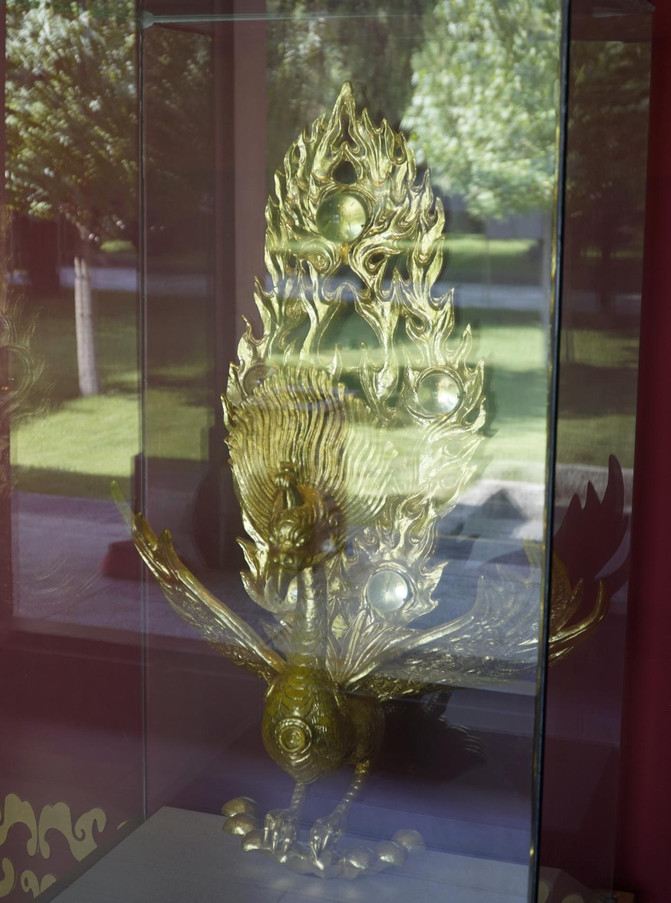
The stone walls in front of the tower "Yongzhen Mountains and Rivers" were inscribed by Mu Shijie, grandson of Mu Ying, Duke of Guizhou in the Ming Dynasty.

The two small towers in the north and south are 70 meters away from the large tower, and the three towers are distributed in an isosceles triangle. The outline of the small towers is conical and the height is 43 meters. They are octagonal pavilions-style 10-level brick towers. The eaves of each tower are built with brackets, flat seats and pagor-shaped niches of various shapes that simulate wooden buildings. The body of the tower has embossed such as Buddha statues, lotus flowers, and vases, all of which are different layers. It is a typical architectural style of the Song Dynasty. It was built during the Duan Zhengyan and Duan Zhengxing periods of Dali State (1108 - 1172).
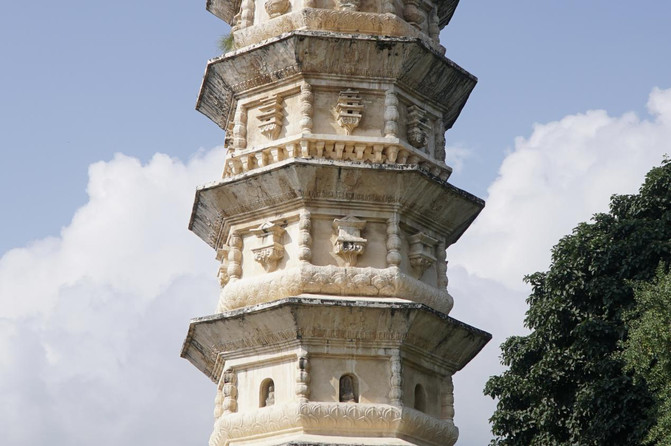
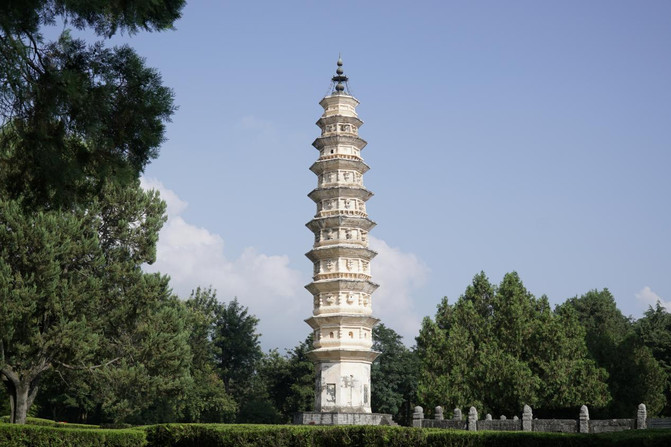
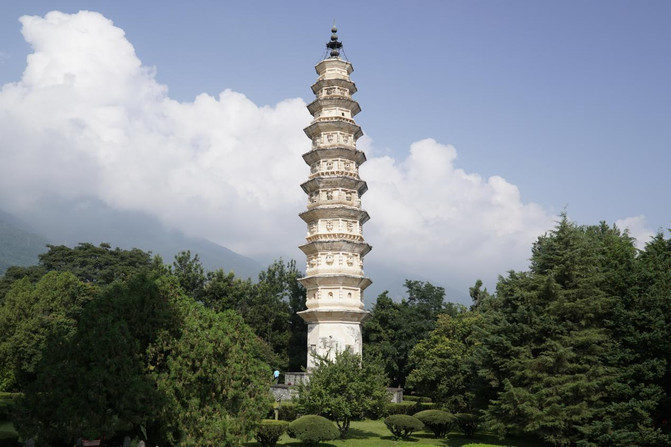
The three pagodas of Chongsheng Temple have the functions of advocating Buddhism, suppressing disasters and evil spirits, and ornamental. The art of building the pagodas reaches the peak and has extremely high historical, cultural and architectural value. Thousands of years of wind and rain erosion and the failure to fail despite the test of more than 30 strong earthquakes are the fulfillment of this miracle.
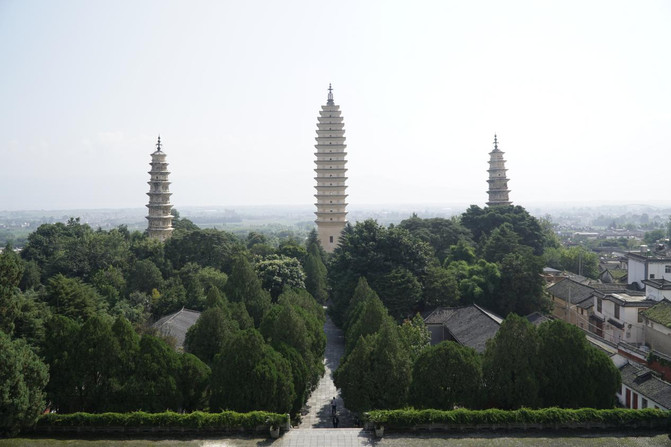
The Juying Pool is shaped like the Erhai Lake, and the Ju Three Towers and Bell Tower are reflected in the pool. It is an ideal scenic spot for photography.

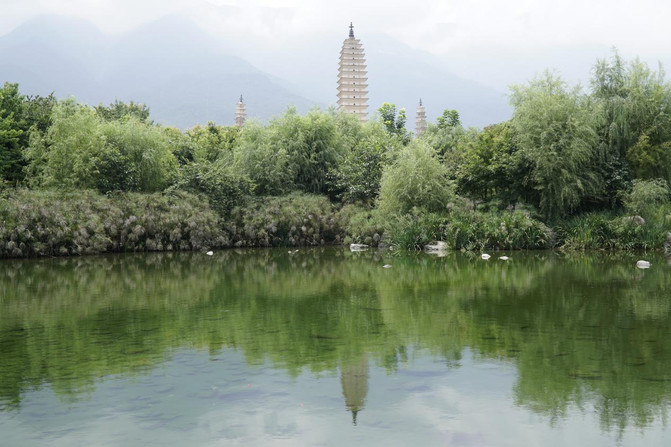
The former scenic area also includes Nanzhao Jianji Bell and Yutong Guanyin Hall.
Behind the three towers, Nanzhao built a very large bell tower, known in ancient times as Shengji Tower. "Nanzhao" is the national name, and "Jianji" is the year name. The bell was cast in the twelfth year of the founding of Nanzhao State (871) and was destroyed during the war in the late Qing Dynasty. In 1997, the bell was recast based on historical data after the return of Hong Kong.
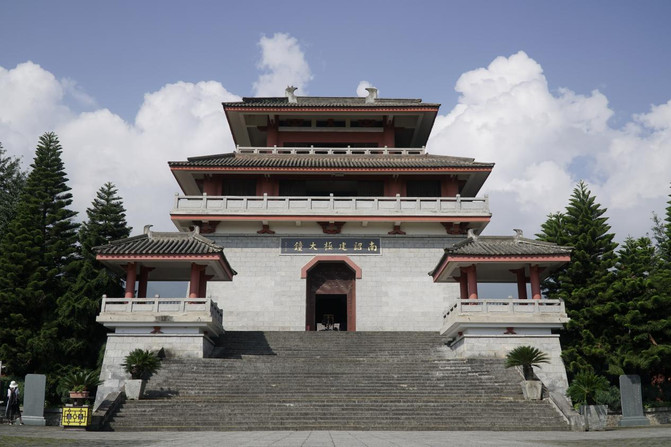
On the west side of the Bell Tower is the Yutong Guanyin Hall restored and rebuilt in 1999. Rain copper Guanyin was cast in the second year of Zhongxing in Nanzhao (899). Making a statue out of copper requires a large amount of copper. Legend has it that it rained copper from the sky, and the ground was covered with copper fragments. The statue was cast, so it was named "Rain Copper Guanyin".

The white marble Sumi seat in the center of the hall is 2.2 meters high, and a bronze and gold lotus seat is 1.8 meters high. On the lotus seat stands an 8.6-meter-high bronze and gold rain copper Guanyin. Guanyin was originally a man, but after being introduced to China, it gradually evolved into a kind and kind woman. The male figure and female face of Yutong Guanyin are important characteristics of the transition from male Guanyin to female Guanyin in Dali area in the middle and late Nanzhao period.
Yutong Guanyin
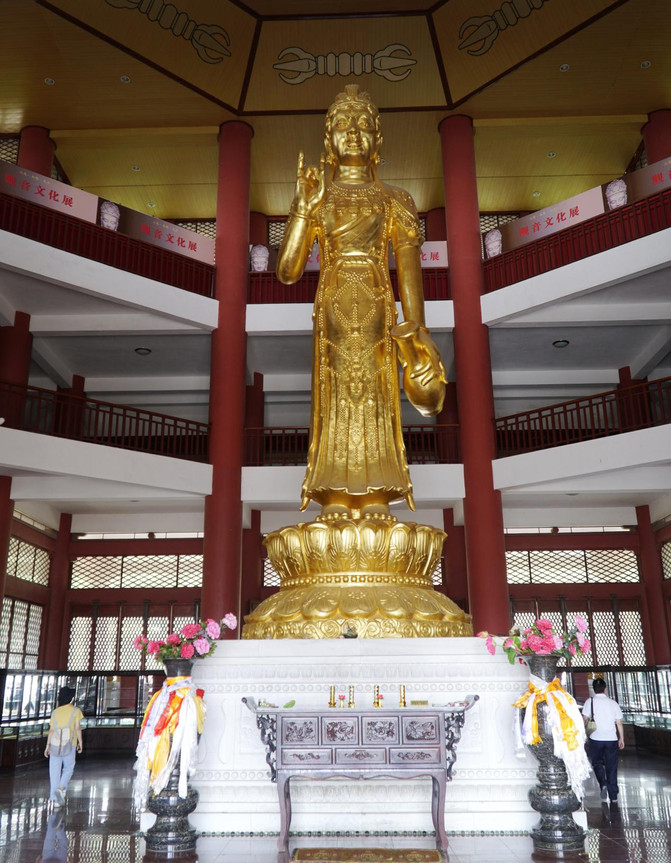
On the left side of Yutong Guanyin, there is Shuiyue Guanyin, and on the west is Acuoye Guanyin. Acuoye Guanyin is unique to Dali. On the right side of Yutong Guanyin, there are male Buddhist monk Guanyin and stone Guanyin holding a gold rope. These two Guanyin are called "Guanyin Father" and "Guanyin Mother" by Dali people. They are both incarnations of Acuoye Guanyin.
Acuoye Guanyin
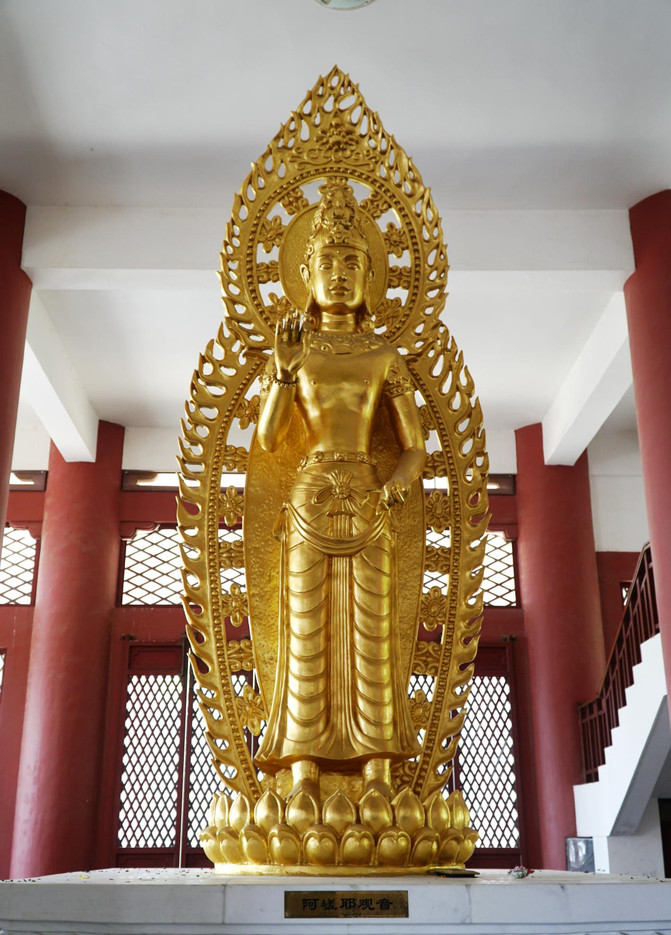
Buddhist monk Guanyin and stone bearing Guanyin
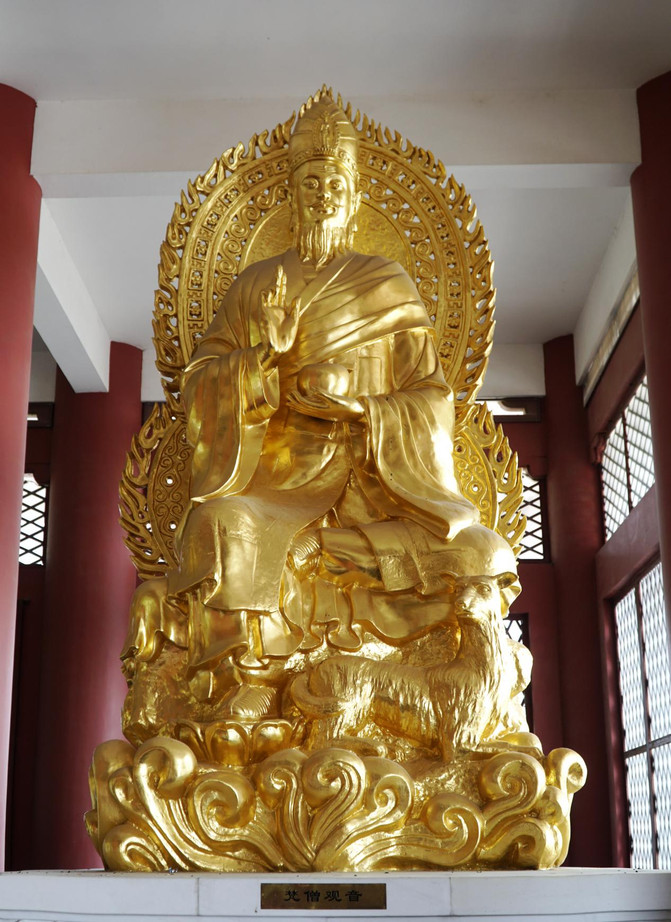

On the second floor of Yutong Guanyin Hall are replicas of two rare scrolls,"The History of Nanzhao Kingdom" and "The Buddhist Portraits Painted by Zhang Shengwen, a painter of Dali Kingdom."
Walking out of the first half of the scenic area, the rear scenic area is restored and rebuilt. Chongsheng Temple is known as the first temple of Han Buddhism.

As early as the sixth year of the Yuanfeng of the Western Han Dynasty (105 BC), the Dali area was officially incorporated into the territory of the Han Dynasty. During the Tang and Song Dynasties, Nanzhao and Dali States were established successively with the Dali area as the center. After the Yuan Dynasty, Zen Buddhism flourished and temples were spread all over the country, known as the "Miaoxiang Buddhist Country".
Historically, Chongsheng Temple was built during the Kaiyuan period of the Tang Dynasty. It was expanded over the past dynasties and reached its peak during the Dali Kingdom of the Song Dynasty. "The base of seven miles is 890 houses and 11,400 Buddhas... There are three pavilions, seventh floors, nine halls, and hundreds of mansions." Chongsheng Temple is the center of Buddhist culture in the entire Dali Kingdom and even the entire Southeast Asia, so it is called the "Buddha Capital".
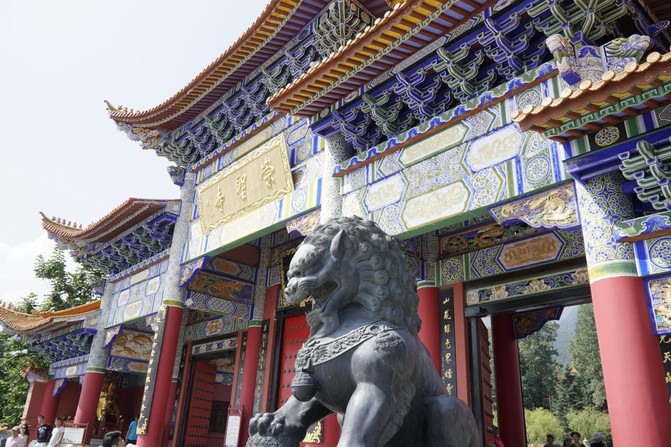

Acuoye Guanyin Pavilion is a double-eaves pavilion imitating the Tang Dynasty high platform, with a 12-meter-long Acuoye Guanyin statue in the middle. The statue of Acuoye Guanyin is special, showing the body of a man and a woman. It is the main goddess of Guanyin of the Bai Tantra and a unique goddess of Guanyin in Dali. It is called "Yunnan Fuxing","Svelte Guanyin", and "Dali Guanyin".
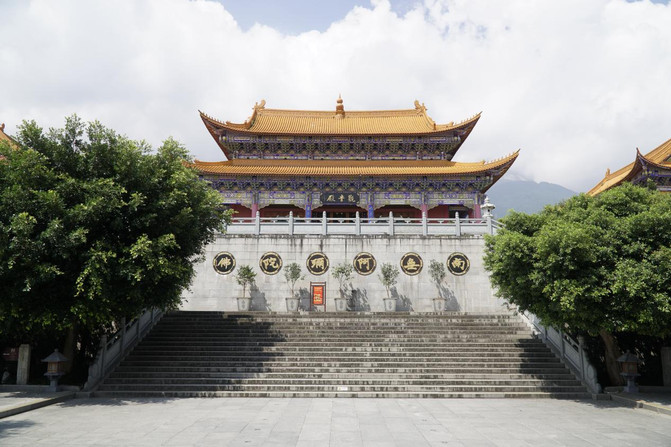
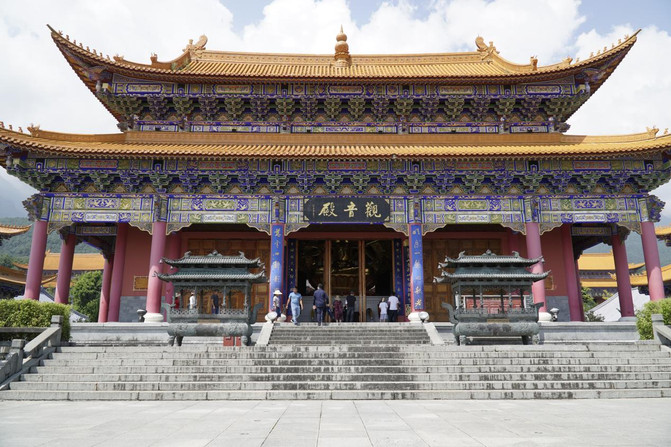
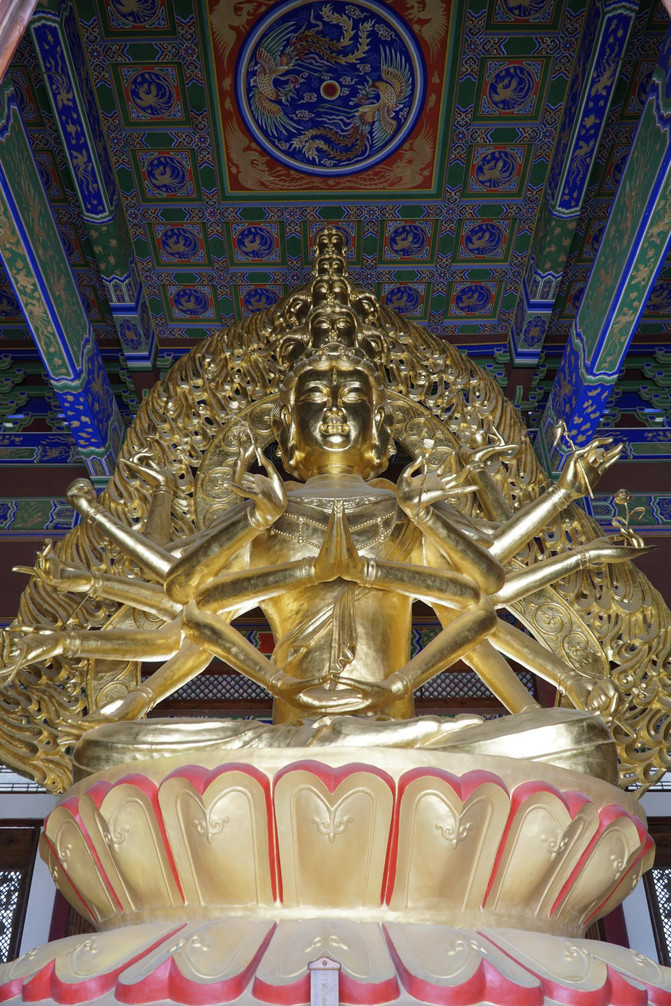
Temple of Eminent Monk
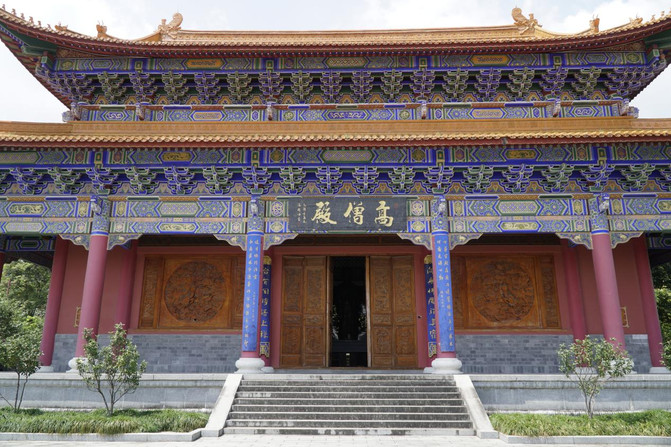
Among the 22 kings of Dali State, 9 abdicated as monks in Chongsheng Temple, and nine statues of eminent monks were erected in the temple.
ancestor Hall
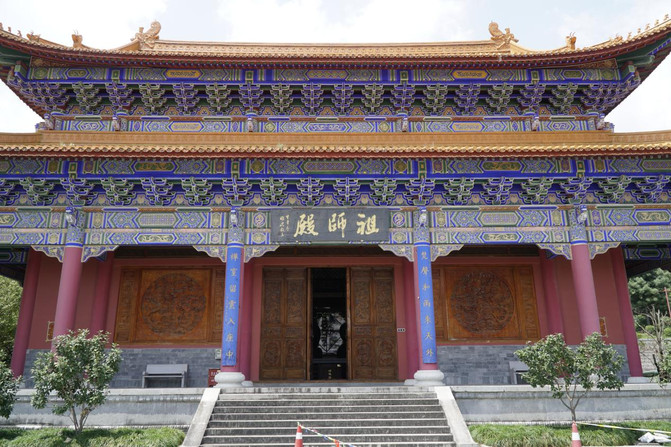
The ancestral hall is dedicated to the benefit of the six ancestors of Zen Buddhism.
daxiong Hall
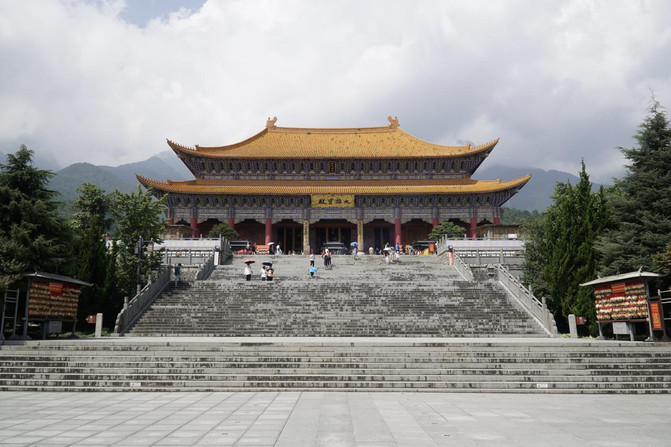

Imitation of the Taihe Hall of the Forbidden City in Beijing, with double eaves and nine bays. Tall, bright and resplendent, it is the largest temple in the country.
Kowloon Bath Buddha
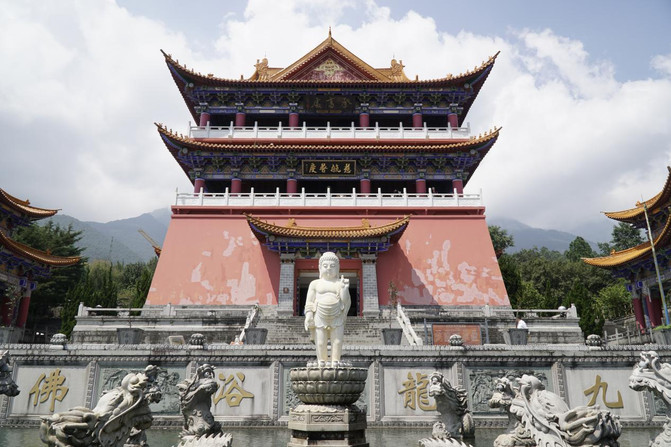
Chongsheng Temple is a Han-style temple with symmetrical axes. It has all the mountain gate, bell and drum tower, Tianwang Hall, Maitreya Hall, Medicine Hall, etc. The layout is also like a Han-style temple.
Previous Article:Meet with him in Dali and spend a romantic and snowy moon together
Next Article:Travel Notes in Dali | If you don't know where to go, go to Dali
